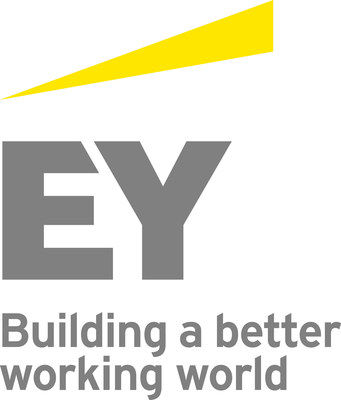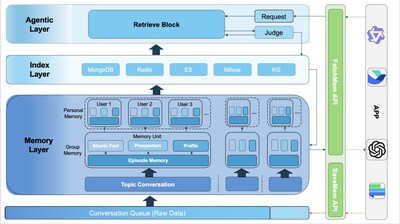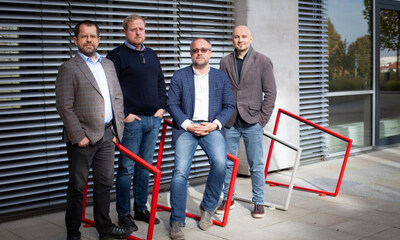Monetization of data among key trends in Internet of Things in 2018
Press Releases
Jan 11, 2018
LONDON, Jan. 11, 2018 /PRNewswire/ — Monetization of data collected from networked IoT devices, convergence of multiple disruptive technologies and standards, and network edge processing are among the key trends for 2018 according to the EY IoT Competence Center, a global team of IoT professionals. The IoT industry has grown considerably over the recent years; however, it remains an area that varies greatly in technologies, systems and disparate standards of operation.

1. IoT monetization: a transition from “value islands” to “value ecosystems”
Business and operational models based on IoT capabilities are still very traditional and the anticipated benefits have primarily focused around how to achieve incremental value (which created value islands) through increased productivity, process automation, and maintenance cost reduction for example. However, more and more decision-makers are realizing the disruptive potential of IoT and are likely to increase its current value stream (toward value ecosystems) and more effectively use and monetize the data collected.
Aleksander Poniewierski, EY Global IoT Leader, says:
“As executives realize the value creation potential of IoT systems, they are likely to seek new areas of application within their organizations. Our analysis projects that we will see multiple proofs-of-concept of such solutions in 2018, as well as acquisitions of start-ups that have IoT solutions in their portfolio. However, this shall bring its own challenges, as it could demand a redesign of business and operating models that require interoperability of current solutions throughout the entire IoT technology stack and the need to embed new IoT sensors in existing products.”
2. A new dawn of network edge processing
Moving of IoT data processing to the network edge was expected to happen in the early years of the IoT development. However, this trend slowed due to decreasing connectivity costs and rising communication networks throughput, which resulted in a shift toward centralized processing. However, falling prices and the increasing processing power of edge devices have revived this trend back towards network edge.
Poniewierski says: “The changing requirements of connected devices such as throughput and power consumption, have resulted in the need to redesign communication networks from a ‘one-size-fits-all’ concept into networks with flexible characteristics. New privacy concerns, especially in Europe, where recent regulations relating to personal data protection rights may result in companies avoiding the transfer of raw data into the public cloud. We therefore expect organizations to increasingly adopt edge of network processing systems.”
3. Disruptive technologies are converging
Technologies like IoT, blockchain, artificial intelligence (AI) and robotic process automation (RPA) are increasingly converging under a single digital disruption umbrella. The EY IoT Competence Center anticipates that in the first half of 2018, suppliers will begin to move toward full integration of IT systems supporting business processes and automation solutions in order to build fully integrated ‘Intelligent Automation’ solutions.
Poniewierski says: “From a business perspective, digital disruption technologies are complementary and perform unique functions within various parts of the organization. We expect that, after a period of initial fascination with pilot implementations of individual disruptive technologies, industry leaders will expect a much more integrated approach to the adoption of digital technologies, and with measurable return on investment.”
4. A battle for standards – IoT connectivity wars
So far IoT interconnectivity has been difficult as players adopt their unique approaches and solutions for different applications. Each promotes their own proprietary standards and protocols, which has led to a multiplicity of closed systems that do not communicate with other devices.
By mid-2018, the EY IoT Competence Center expects the pre-standard 5G mobile network to be launched in the US. This is projected to support virtual private networks with different operational characteristics, and work across multiple frequencies. While global distribution of 5G networks are not expected until 2020, formalized standards are expected to be in place in 2018 and have the potential to reshape almost all current wireless communication methods used for IoT-based applications.
Poniewierski says: “IoT cannot thrive without effective and affordable wireless connectivity, interoperability and common standards. We believe 5G has the potential to make a ground-breaking impact on the way in which future IoT ecosystems are designed, especially in the areas of scalability, latency, reliability, security and the level of individual control on connectivity parameters.”
5. From cybersecurity to resilience by design
EY IoT Competence Center analysis reveals that security and privacy concerns are the top factors preventing decision-makers from committing to IoT development and implementation. Increasingly, companies are recognizing that the solutions required to secure centralized IT systems are not sufficient to secure distributed IoT systems, especially in applications requiring high levels of reliability.
Poniewierski says: “IoT solutions require simultaneous fulfillment of security, privacy, safety, reliability and resilience that cannot be achieved through securing individual elements of a multipurpose environment. Therefore, current approaches must consider changing direction from simply seeking to achieve security, toward a resilience-by-design approach that incorporates redundancy into architectural and organizational design and separates data processing.”
Notes to Editors
About EY
EY is a global leader in assurance, tax, transaction and advisory services. The insights and quality services we deliver help build trust and confidence in the capital markets and in economies the world over. We develop outstanding leaders who team to deliver on our promises to all of our stakeholders. In so doing, we play a critical role in building a better working world for our people, for our clients and for our communities.
EY refers to the global organization, and may refer to one or more, of the member firms of Ernst & Young Global Limited, each of which is a separate legal entity. Ernst & Young Global Limited, a UK company limited by guarantee, does not provide services to clients. For more information about our organization, please visit ey.com.
This news release has been issued by EYGM Limited, a member of the global EY organization that also does not provide any services to clients.
|
Barbara Burgess |
Aparna Sankaran |
|
EY Global Media Relations |
EY Global Media Relations |
|
+1 212 773 1652 |
+44 748 024 5082 |
![]() View original content with multimedia:http://www.prnewswire.com/news-releases/monetization-of-data-among-key-trends-in-internet-of-things-in-2018-300581028.html
View original content with multimedia:http://www.prnewswire.com/news-releases/monetization-of-data-among-key-trends-in-internet-of-things-in-2018-300581028.html
SOURCE EY



